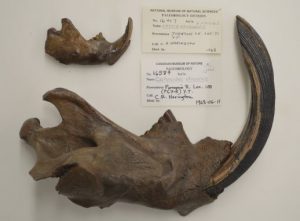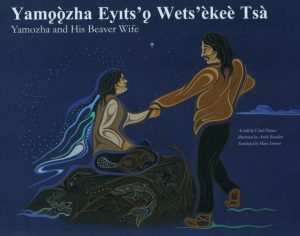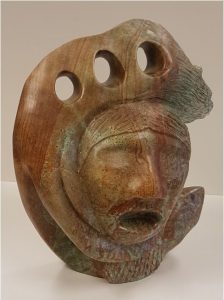A recently published article in the Journal of Scientific Reports is suggesting Giant Pleistocene beavers diet, helped lead to their extinction during the last ice age, 20,000 some years ago.
Dr. Grant Zazula is a paleontologist with the Government of Yukon and a co-author of the recent report. He was part of the team who studied and carbon dated giant beaver skulls found near the Vuntut Gwich’in community of Old Crow.
Zazula says because the 220 pound rodents ate weeds, and underwater plants similar to what moose ate, the rapidly cooling temperatures meant they ran out of food which lead to their demise.
“If they ate wood, like today’s smaller beavers they would have lived longer. There’s no evidence of them being hunted to extinction. We do have evidence of mammoths being hunted by early humans,” explained Zazula.

Today’s beaver jaw and a Giant Beaver jaw . (Photo Submitted by Dr. Grant Zazula)
“We didn’t find any evidence that they were actually cutting down and eating trees, they weren’t ecosystem engineers the same way that modern beavers are,” said Tessa Plint, co-author of the new study.

Western Ontario University researcher and study co-author Tessa Plint in Whitehorse.
While this new information was released last Thursday, Dene and Indigenous peoples of the North have been sharing legends and creating art depicting giant beavers for generations.
Recently the legend of Yamoria, or Yamoozha is being published in books for children as part of Dene language revitalization.

The NWT’s Prince of Wales Northern Heritage Museum also has a Yamoria on-line portal, sharing stories and a map showing where the Dene demi-god battles Giant Beavers, and he himself shift shapes into a Giant Beaver to lead them away from people.
Here is some of the legend of Yamoria, as told by the late Dene storyteller George Blondin:
“A very long time ago when the world was new, a lot of strange things happened. At that time the most powerful medicine person was named Yamoria and he could communicate with birds and animals and shape shift into birds and animals as well. In this story, there were some giant beavers – the size of bears who were terrorizing Great Bear Lake.
When Yamoria heard about that, he went to Sahtu and told the people that he would chase the beavers away so they could fish freely to feed their families. Yamoria turned himself into a beaver and started chasing the beavers around the lake. The big beavers immediately went down Sahtu De (Bear River) but the younger ones were harder to chase towards the river. During the time that Yamoria was chasing the younger ones around the lake, the bigger beavers had built a dam on the river near the present day Sahtu De Rapids. Yamoria got the younger ones to head down Sahtu De and then he chased all of them down the river. Near Tulita, at the meeting place of the two rivers, Sahtu De (Bear River) and Dehcho (Mackenzie River), Yamoria killed two medium beavers and one small one. He spared the lives of the larger beavers and they continued down the Great River, Dehcho. After killing the three beavers, he stretched and pegged the three hides on the south face of KweteniÆaa (Bear Rock Mountain). The people in the community were now able to fish freely and feed their families and they thanked Yamoria for his help. As a reminder of his help, Yamoria left an impression of the beaver hides that can be seen on that rock to this very day.”

Anthony Antoine’s Carving of Bear Rock





